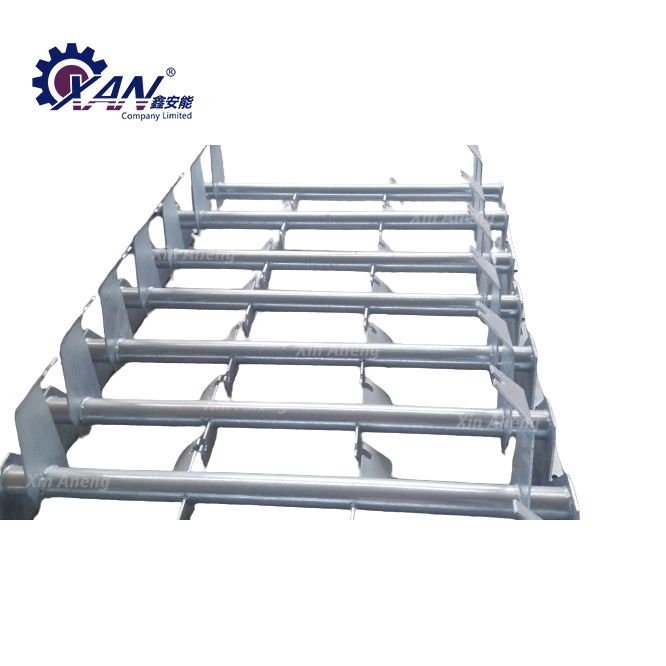
Roller conveyors are part of material handling systems that use a series of evenly spaced cylindrical rollers to move boxes, supplies, materials, objects, and parts across an open space or from an upper level to a lower level. The frame of roller conveyors is at a height that makes it easy to access and load materials manually. Items transported by roller conveyors have rigid, flat surfaces that allow materials to move smoothly across the rollers.
The uses for roller conveyors include accumulation applications, reduction of product inertia, and high-speed sorting. Drive roller conveyors have rollers attached to a motor by a chain, shaft, or belt. The use of drive rollers equalizes the velocity at which materials are moved, can be reversible, and can have the capability of moving goods from a lower level to a higher one. They are used in bi-directional applications where the conveyor’s motor can change a product's
Roller conveyors have design features that enable them to serve the needs of specific applications. Although roller conveyors vary according to their structure, mode of movement, and other manufacturer features, all roller conveyors have the same basic characteristics.
Powered roller conveyors have small belts and plastic spools that give traction to the rollers. Friction belts or chains placed beneath the conveyor of a powered roller conveyor are used to power its heavy-duty rollers and are connected to a shaft that spans the length of the conveyor's frame, which is linked to an electric motor that drives the rollers.

Rollers for roller conveyors are metal cylinders fitted into their frame with sets of bearings on either end of the cylinder. There are several types of conveyor rollers each of which is designed to fit the needs of the product being transported. Rubber and plastic rollers increase friction while steel and aluminum rollers have a smooth surface. Rollers are selected for their ability to keep products on the conveyor, and their ability to maintain the integrity of products.
Plastic Rollers
Plastic conveyor rollers are economical rollers and are designed to handle light loads. They are easy to install and require little maintenance. Plastic conveyor rollers meet the noise standards of the Plastic conveyor rollers comply with occupational and application food safety. Since plastic does not corrode, or rust, and is resistant to the effects of moisture, they have a longer useful life. Plastic conveyor rollers are easy to clean and are used to transport food packaging in the food industry.
Nylon Rollers
Nylon rollers are used for medium to heavy loads and have the durability and strength that enables them to withstand constant use. They are made of synthetic polymers that are resistant to abrasion, chemicals, and corrosion. Nylon conveyor rollers, like plastic conveyor rollers, are lightweight, easy to install, and produce limited noise due to their low vibration.
Rubber Coated Rollers
Rubber-coated rollers have a rubber coating placed over steel, stainless steel, or solid plastic rollers. The rubber layer improves the grip of the roller and protects the roller and products. The types of rubber coatings vary by the industry where they are used. Rubber-coated rollers are resilient, soft, and have the ability to grip smooth materials.
As with all rubber products, rubber-coated rollers are anti-static, chemical resistant, customizable, and durable. They are used by the automotive industry, in printing, packaging, and fabrication. Rubber-coated rollers have increased friction between the roller and materials that prevent slippage.
Steel and Stainless Steel Rollers
Steel and stainless steel rollers are the most popular conveyor roller materials due to their durability and smooth surface. They are simple to clean, long-lasting, strong, and capable of moving heavy materials. Steel and stainless steel are used as the core for plastic, nylon, and rubber rollers due to their smooth surface and exceptional strength.
Stainless steel rollers are compatible with any material, can accommodate smaller diameters, have precision bearings or are fixed shafts, and can be adjusted to meet shipping needs.
The frame of the roller conveyor can be permanently positioned or temporarily placed and is made of steel, stainless steel, or aluminum. The convenience of temporary roller conveyors makes it possible to assemble and disassemble them for repositioning. In the choice of structural metals, aluminum roller conveyors are lighter and used to move lighter loads.
The support legs of the roller conveyor come in different sizes, materials, and styles to meet the needs of the conveyor and its load. They can be in tripod design or "H" design, with the "H" design legs divided into light, medium, and heavy-duty. The support legs are made of channel steel and can accommodate rollers of different diameters.
If you are interested in our products or have any questions, please feel free to contact us.